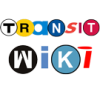Difference between revisions of "TOD Database"
Rabiabonour (talk | contribs) |
|||
| Line 2: | Line 2: | ||
==Introduction== | ==Introduction== | ||
| − | Created by the Center for Transit-Oriented Development (CTOD), the National TOD | + | Created by the Center for Transit-Oriented Development (CTOD), the [http://toddata.cnt.org/index.php National TOD Database] provides detailed population data for every existing and proposed fixed guideway transit station in the United States (as of October 2011). The database organizes information into a simple map format and allows you to examine economic and demographic data at the levels of single transit zone, collection of transit zones, or larger transit region. This allows planners and other government officials to learn about the population at a particular station, compare stations, and see how demographics around stations have changed over time. |
==How it Works== | ==How it Works== | ||
| − | The TOD Database | + | The TOD Database contains nearly 70,000 data characteristics from thousands of stations. It aggregates data from six sources: |
* US Decennial Census, 2000 | * US Decennial Census, 2000 | ||
* US Decennial Census, 2010 | * US Decennial Census, 2010 | ||
| Line 17: | Line 17: | ||
==Applications== | ==Applications== | ||
===Transit Operators=== | ===Transit Operators=== | ||
| − | Because the database contains information for stations all across California, transit operators can use it to benchmark their own performance against agencies in other parts of the state. Station area profiles can be used to create station typologies and enhance site targeting. | + | Because the database contains information for stations all across California (and beyond), transit operators can use it to benchmark their own performance against agencies in other parts of the state. Station area profiles can be used to create station typologies and enhance site targeting. Operators can use mode to work data to help assess system efficiency. |
| − | === | + | |
| − | + | ===Planners=== | |
| + | Transportation planners can use the mode to work and Census Transportation Planning Package (CTPP) information included in the database to analyze travel trends across various demographics. This lets you update travel demand models and plan future routes. Planners can also identify underutilized areas in which to prioritize development. | ||
==Case Study== | ==Case Study== | ||
| − | In Los Angeles, CTOD worked with Caltrans and the Los Angeles County Metro to analyze the city's current and proposed rail stations. CTOD created a typology in which stations were sorted based on the number of residents and workers in the half mile radius around stations and mix of land uses. This typology was useful in | + | In Los Angeles, CTOD worked with Caltrans and the Los Angeles County Metro to analyze the city's current and proposed rail stations. CTOD created a typology in which stations were sorted based on the number of residents and workers in the half mile radius around stations and mix of land uses. This typology was useful in measuring development along rail lines. The report found that the land around stations in LA is generally highly developed, but there is room for the city to provide increase active transportation infrastructure. |
Revision as of 01:38, 6 October 2016

|
This page is a "stub" - it needs more content.
You are invited to add your knowledge. Please contribute! |
Introduction
Created by the Center for Transit-Oriented Development (CTOD), the National TOD Database provides detailed population data for every existing and proposed fixed guideway transit station in the United States (as of October 2011). The database organizes information into a simple map format and allows you to examine economic and demographic data at the levels of single transit zone, collection of transit zones, or larger transit region. This allows planners and other government officials to learn about the population at a particular station, compare stations, and see how demographics around stations have changed over time.
How it Works
The TOD Database contains nearly 70,000 data characteristics from thousands of stations. It aggregates data from six sources:
- US Decennial Census, 2000
- US Decennial Census, 2010
- American Community Survey, 2005-09 5 Year Estimates
- Census Transportation Planning Package, 2000
- Local Employment Dynamics, 2002- 2009
- Housing + Transportation Affordability Index
Selecting a station allows the user to view a variety of reports, including journey to work, vehicle ownership, household income, and more. You can also create a custom report by picking individual datasets from each of the six sources and combining them. These reports can be downloaded in Word, Excel, or CSV format. Additionally, you can download CSV file containing names and locations of all stations in a region.
Applications
Transit Operators
Because the database contains information for stations all across California (and beyond), transit operators can use it to benchmark their own performance against agencies in other parts of the state. Station area profiles can be used to create station typologies and enhance site targeting. Operators can use mode to work data to help assess system efficiency.
Planners
Transportation planners can use the mode to work and Census Transportation Planning Package (CTPP) information included in the database to analyze travel trends across various demographics. This lets you update travel demand models and plan future routes. Planners can also identify underutilized areas in which to prioritize development.
Case Study
In Los Angeles, CTOD worked with Caltrans and the Los Angeles County Metro to analyze the city's current and proposed rail stations. CTOD created a typology in which stations were sorted based on the number of residents and workers in the half mile radius around stations and mix of land uses. This typology was useful in measuring development along rail lines. The report found that the land around stations in LA is generally highly developed, but there is room for the city to provide increase active transportation infrastructure.